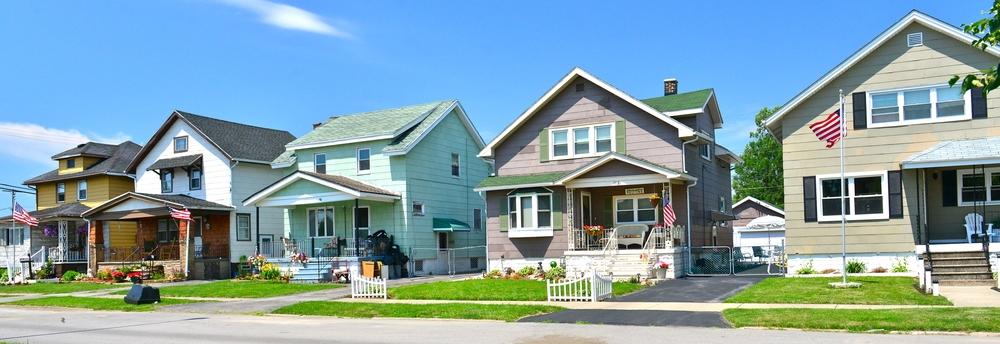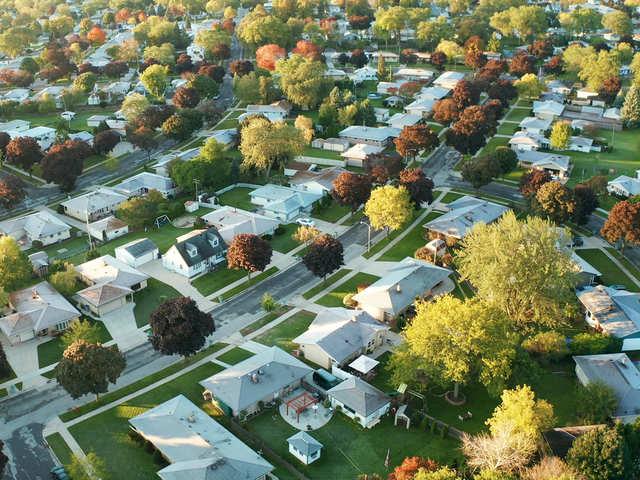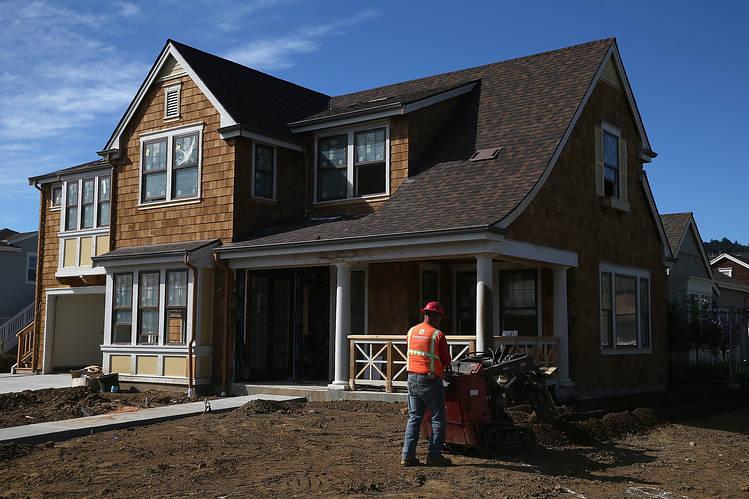Mortgage rates in the US dropped below 7% last week, a significant milestone for potential homebuyers. This marked the first time since March that rates fell below this level.
Historically, lower mortgage rates have boosted housing demand and affordability. A study by the National Association of Realtors found that a 1% decrease in mortgage rates can increase home sales by up to 15%. The Federal Reserve’s actions play a crucial role in influencing mortgage rates.
30-Year Fixed Rate Declines

The 30-year fixed mortgage rate, a popular choice among homebuyers, decreased by 8 basis points to 6.94% in the week ending June 14. This type of mortgage offers borrowers a fixed rate for the entire 30-year term.
According to data from Freddie Mac, the 30-year fixed rate averaged 6.28% in 2022, up from 3.07% in 2021. The rise in rates had a significant impact on housing affordability.
Adjustable-Rate Mortgages (ARMs) Drop

The five-year adjustable-rate mortgage (ARM) rate slid 18 basis points to 6.27%, matching the lowest level since February. ARMs typically offer lower initial rates than fixed-rate mortgages but carry the risk of rate adjustments over time.
A study by the Consumer Financial Protection Bureau found that ARMs can save borrowers money in the short term but can become more expensive if rates rise significantly.
Home Purchase Applications Increase

The index of mortgage applications for home purchases increased by 1.6% last week, reaching the highest level since March. This followed an 8.6% jump in the previous week.
Rising mortgage rates in 2022 had dampened homebuying activity, but lower rates in 2023 are providing a boost. The Mortgage Bankers Association reported a 35% year-over-year increase in purchase applications as of early June.
Rates Tied to Treasuries

Mortgage rates move in tandem with Treasury yields, which also declined notably last week. When Treasury yields fall, mortgage rates typically follow suit.
This relationship is due to the fact that mortgage-backed securities, which influence mortgage rates, are priced based on the yields of government bonds like Treasuries. A study by Freddie Mac found that a 1% increase in 10-year Treasury yields corresponds to a 0.8% increase in mortgage rates.
Cooling Inflation Sparks Speculation

Government figures showed a broad cooling in inflationary pressures last week. This prompted traders to boost bets that the Federal Reserve might move ahead with interest rate cuts as soon as September.
Inflation has been a major concern for the Fed, and its actions to combat it have impacted mortgage rates. A study by the Urban Institute found that a 1% increase in the federal funds rate leads to a 0.5% increase in mortgage rates over time.
Housing Market’s Potential Revival

The housing market was showing signs of breaking free from a years-long slump until mortgage rates began to climb. Lower financing costs for home purchases have the potential to revive housing demand and blunt the impact of elevated list prices.
The National Association of Realtors reported that existing home sales fell by 17.8% in 2022 due to higher mortgage rates and home prices.
Overall Mortgage Applications Rise

The Mortgage Bankers Association’s overall index of applications advanced 0.9% last week to the highest level since mid-January. Refinancing activity, however, has been subdued due to higher mortgage rates.
A study by Freddie Mac found that refinancing activity typically increases when mortgage rates drop by at least 0.5 percentage points. Lower mortgage rates can improve housing affordability, which has been a significant challenge for many potential homebuyers in recent years.
Refinancing Applications Dip Slightly

Despite the overall increase in mortgage applications, the Mortgage Bankers Association’s refinancing gauge slipped by 0.4% last week. Refinancing activity has been dampened by higher mortgage rates in recent years.
Homeowners have had less incentive to refinance their existing loans. According to data from the MBA, refinancing activity peaked in 2020 when mortgage rates reached historic lows.
MBA Survey Methodology

The Mortgage Bankers Association’s weekly survey, which has been conducted since 1990, uses responses from mortgage bankers, commercial banks, and thrifts. The data cover more than 75% of all retail residential mortgage applications in the US.
It provides a comprehensive view of the mortgage market. It provides a comprehensive view of the mortgage market.The MBA’s survey is widely followed by industry professionals and policymakers as a leading indicator of housing market trends.

